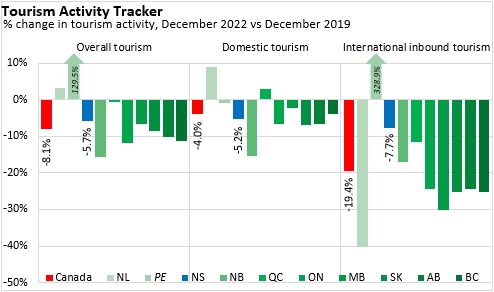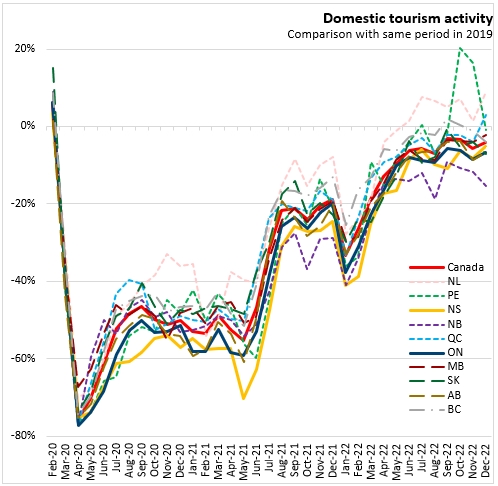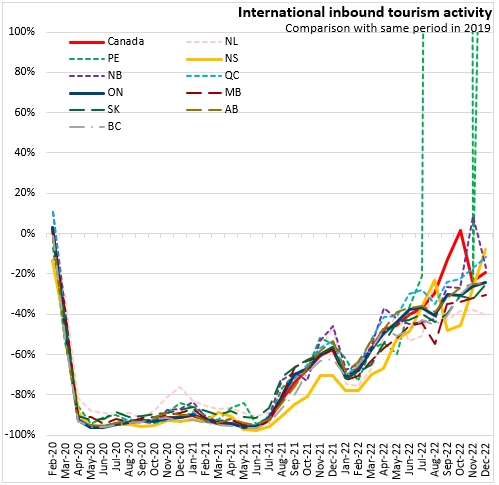The Economics and Statistics Division maintains archives of previous publications for accountability purposes, but makes no updates to keep these documents current with the latest data revisions from Statistics Canada. As a result, information in older documents may not be accurate. Please exercise caution when referring to older documents. For the latest information and historical data, please contact the individual listed to the right.
<--- Return to Archive
For additional information relating to this article, please contact:
March 06, 2023TOURISM ACTIVITY TRACKER - FINAL EDITION, DECEMBER 2022 Final release: December 2022
Statistics Canada implemented its experimental Tourism Activity Tracker during the pandemic to assess how tourism was recovering after travel and activity restrictions were lifted. With most provinces reporting tourism activity similar to the magnitudes reported in 2019, Statistics Canada has determined that this product has fulfilled its purpose and will be discontinued. This will be the final release of the Tourism Activity Tracker.
Tourism December 2022 vs December 2019
Nova Scotia’s tourism was 5.7% lower in December 2022 compared to same period in 2019. Domestic tourism was down 5.2% and international tourism was 7.7% lower in December 2022. After progress slowed in the fall of 2022, Nova Scotia's tourism recovery has caught up again with the national trend.
Canada’s tourism was 8.1% lower in December 2022 than in December 2019. Domestic tourism in Canada was down 4.0% while international tourism in Canada was down 19.4%.
Prince Edward Island (+129.5%) and Newfoundland and Labrador (+3.1%) were the only provinces to record higher overall tourism in December 2022 than in December 2019 (tourism activity in Quebec was down only marginally). Prince Edward Island's increase in tourism activity was attributable to a very large increase in international inbound tourism; its domestic tourism was still down in December 2022 compared to December 2019. Newfoundland and Labrador reported the largest decline in international inbound tourism, but this was more than offset by the largest increase in domestic activity.
New Brunswick reported the largest decline in tourism activity from December 2019 to December 2022 (largely on lower domestic activity).

Since the last wide-spread restrictions were lifted in early 2022, tourism activity's recovery has trended back to 2019 levels for all provinces.
There was a notable anomaly for Prince Edward Island created by the return of the cruise ship visits in 2022.



Notes: Statistics Canada's "Canadian Tourism Activity Tracker" illustrated the impacts of the COVID-19 pandemic on tourism activity. The data compared each reference period and the same month in 2019, prior to the pandemic. This provides a snapshot of how tourism activity changed, including air travel, surface travel, hotels/accommodations, spending and trip duration. Tourism activity was monitored for both domestic travellers (those travelling within Canada, including within province more than 40 km from home) as well as for inbound travellers from international sources. Overall tourism was estimated as a weighted average of domestic and inbound tourism activities.
Source: Statistics Canada. Table 24-10-0049-01 Canadian Tourism Activity Tracker and Grouped Data Sources, Canadian Tourism Activity Tracker
<--- Return to Archive